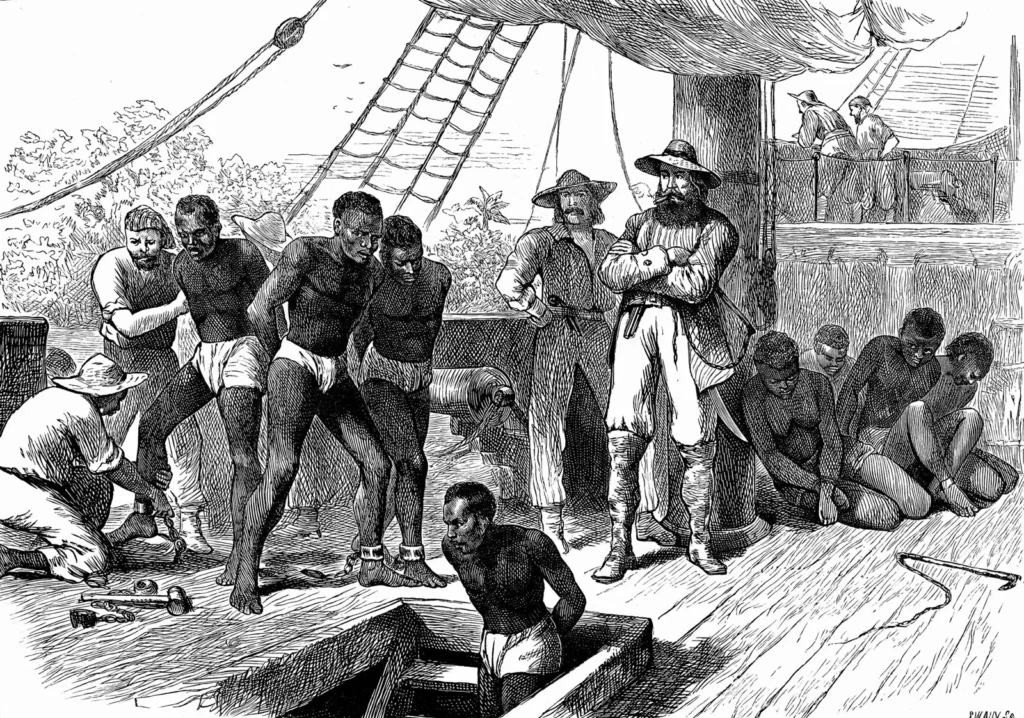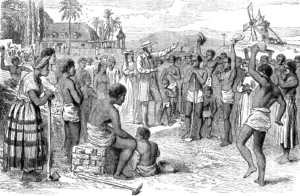The Transatlantic Slave Trade, often considered one of the darkest chapters in human history, has left an indelible mark on the world. Spanning over four centuries, this brutal and inhumane trade system forcibly uprooted millions of Africans from their homelands, shaping the socioeconomic and cultural landscapes of multiple continents. But what was the true impact of the Transatlantic Slave Trade? Let's dive deep into its far-reaching consequences.
Origins and Scale of the Transatlantic Slave Trade
Before we unpack the impact, let's understand the scale. The Transatlantic Slave Trade began in the 15th century and persisted until the 19th century. European colonizers, driven by economic greed, sought labor to work on plantations in the New World. This led to the forcible transportation of an estimated 12 to 15 million Africans across the Atlantic Ocean.
How Did It All Begin?
It all started with the Portuguese exploring the West African coast in the mid-1400s. They initially traded goods for gold and spices, but soon, human beings became the primary commodity. The demand for labor in the burgeoning plantations of the New World skyrocketed, and enslaved Africans were seen as an ideal solution.
The Mechanics of the Trade
The Transatlantic Slave Trade was a complex system, often referred to as the Triangular Trade due to its three-legged route.
Capture and Transport
Africans were captured through wars, raids, and trade with local leaders. They were then marched to coastal forts, where they were held until they could be loaded onto ships.
The Middle Passage
This term refers to the horrific sea journey endured by enslaved Africans. Packed into the hulls of ships with little room to move, they faced disease, malnutrition, and abuse. Many did not survive the journey.
Arrival and Sale in the Americas
Once in the Americas, enslaved people were sold at auctions to the highest bidders. They were then forced to work on plantations, in mines, or as domestic servants.
The Role of European Powers
The primary players in the trade were European nations such as Portugal, Spain, Britain, France, and the Netherlands. They established coastal forts in Africa, where captured Africans were held before being shipped to the Americas. The sheer scale and organization of this trade were staggering, with ships specifically designed to carry human cargo under horrendous conditions.
The Middle Passage
One of the most harrowing aspects was the Middle Passage—the journey across the Atlantic. Packed like sardines in the ship's hull, enslaved Africans faced inhumane conditions, rampant disease, and brutal treatment. It's estimated that up to 20% did not survive the journey, perishing due to the horrid conditions.

Economic Impact
Wealth Accumulation in Europe
The economic impact of the Transatlantic Slave Trade was profound. The wealth accumulated from slave labor on plantations, particularly sugar, tobacco, and cotton, fueled the growth of European economies. This influx of wealth contributed to the Industrial Revolution, laying the foundation for modern capitalism.
The Americas: Foundation on Slave Labor
In the Americas, particularly in the Caribbean and the southern United States, the economy was heavily reliant on slave labor. Plantations became the economic backbone, producing vast quantities of cash crops. Cities like Charleston and New Orleans flourished, becoming economic hubs due to the slave trade.
Disruption in Africa
Conversely, Africa faced severe economic disruption. The trade depopulated vast regions, especially West Africa, where most slaves were captured. The loss of a significant portion of the young, able-bodied population stunted economic development and destabilized societies, leading to long-term repercussions that are still felt today.
Social and Cultural Impact
African Diaspora
The forced migration created a vast African diaspora. Enslaved Africans brought their cultures, traditions, and languages with them, leading to a blending of cultures in the New World. This cultural fusion significantly influenced music, cuisine, religion, and language in the Americas.
Racial Discrimination and Segregation
The legacy of the Transatlantic Slave Trade also entrenched racial discrimination and segregation. The dehumanization of Africans laid the groundwork for systemic racism, which persisted long after the abolition of slavery. In the United States, this legacy is evident in the Jim Crow laws and the ongoing struggle for racial equality.
Psychological Trauma
The psychological impact on the descendants of enslaved Africans cannot be overstated. The trauma of slavery has been passed down through generations, manifesting in various forms of social and economic inequality. The struggle for identity and recognition is a direct consequence of the brutal history of the Transatlantic Slave Trade.
Geographical Impact
Africa: Loss and Fragmentation
The geographical impact on Africa was devastating. Entire regions were depopulated, and the constant warfare fueled by the slave trade further fragmented societies. Kingdoms like Dahomey and Ashanti engaged in slave raids, leading to internal conflicts and further weakening the continent.
Caribbean and Brazil: Cultural Melting Pots
In the Caribbean and Brazil, the massive influx of African slaves led to a unique cultural blend. African traditions merged with European and indigenous cultures, creating vibrant, multicultural societies. However, these regions also saw harsh plantation economies and brutal treatment of slaves.
United States: Economic Divide
In the United States, the dependence on slave labor created a distinct economic divide between the North and South, contributing to the Civil War. The Southern economy was deeply intertwined with slavery, while the North, although complicit, moved towards industrialization. This divide has had lasting socio-economic repercussions.
Abolition and Legacy
Abolition Movements
The fight to end the Transatlantic Slave Trade saw the rise of powerful abolition movements. Figures like William Wilberforce in Britain and Frederick Douglass in the United States played crucial roles in advocating for the end of slavery. The abolition of the trade in the early 19th century was a significant victory, but the road to true freedom and equality was far from over.
Reparations and Reconciliation
The legacy of the Transatlantic Slave Trade is still a topic of debate. Many argue for reparations to address the centuries of exploitation and suffering. Efforts at reconciliation, such as the establishment of museums and memorials, aim to educate and heal the wounds of the past.
Places Significantly Affected by the Transatlantic Slave Trade
Goree Island, Senegal
Goree Island was one of the most notorious slave-trading centers on the African coast. The House of Slaves museum stands as a poignant reminder of the brutal history.
Elmina Castle, Ghana
Elmina Castle, built by the Portuguese, was a major holding facility for captured Africans. Its dark dungeons and history make it a key historical site.
Havana, Cuba
Havana was a major port in the slave trade, with millions of Africans passing through on their way to plantations across the Caribbean and the Americas.
Rio de Janeiro, Brazil
Brazil received the largest number of enslaved Africans, and Rio de Janeiro was a primary port of entry. The cultural impact of this is evident in Brazil's rich African heritage.
Charleston, USA
Charleston, South Carolina, was one of the largest slave trading ports in the United States. The remnants of this history are still visible in the city today.
Conclusion
The impact of the Transatlantic Slave Trade is vast and multifaceted, shaping the world in ways that are still evident today. From economic foundations to cultural transformations and enduring social issues, the legacy of this dark period in history continues to influence modern society. Understanding this impact is crucial for addressing the long-standing inequalities and honoring the resilience of those who suffered through it.
Frequently Asked Questions
What was the Transatlantic Slave Trade?
The Transatlantic Slave Trade was the forced transportation of millions of Africans to the Americas between the 15th and 19th centuries to work as slaves.
How did the Transatlantic Slave Trade impact Africa?
The trade caused significant depopulation, economic disruption, and societal fragmentation in Africa. It also led to long-term socio-economic challenges.
What were the main economic impacts of the Transatlantic Slave Trade?
The trade significantly enriched European economies and established plantation economies in the Americas. It also laid the groundwork for modern capitalism.
What cultural impacts did the Transatlantic Slave Trade have?
It led to the creation of the African diaspora, blending African cultures with those in the Americas, and contributed to systemic racism and discrimination.
Why is the Transatlantic Slave Trade still relevant today?
Its legacy is seen in ongoing racial inequality, cultural contributions from the African diaspora, and the continuing discussions around reparations and reconciliation.


